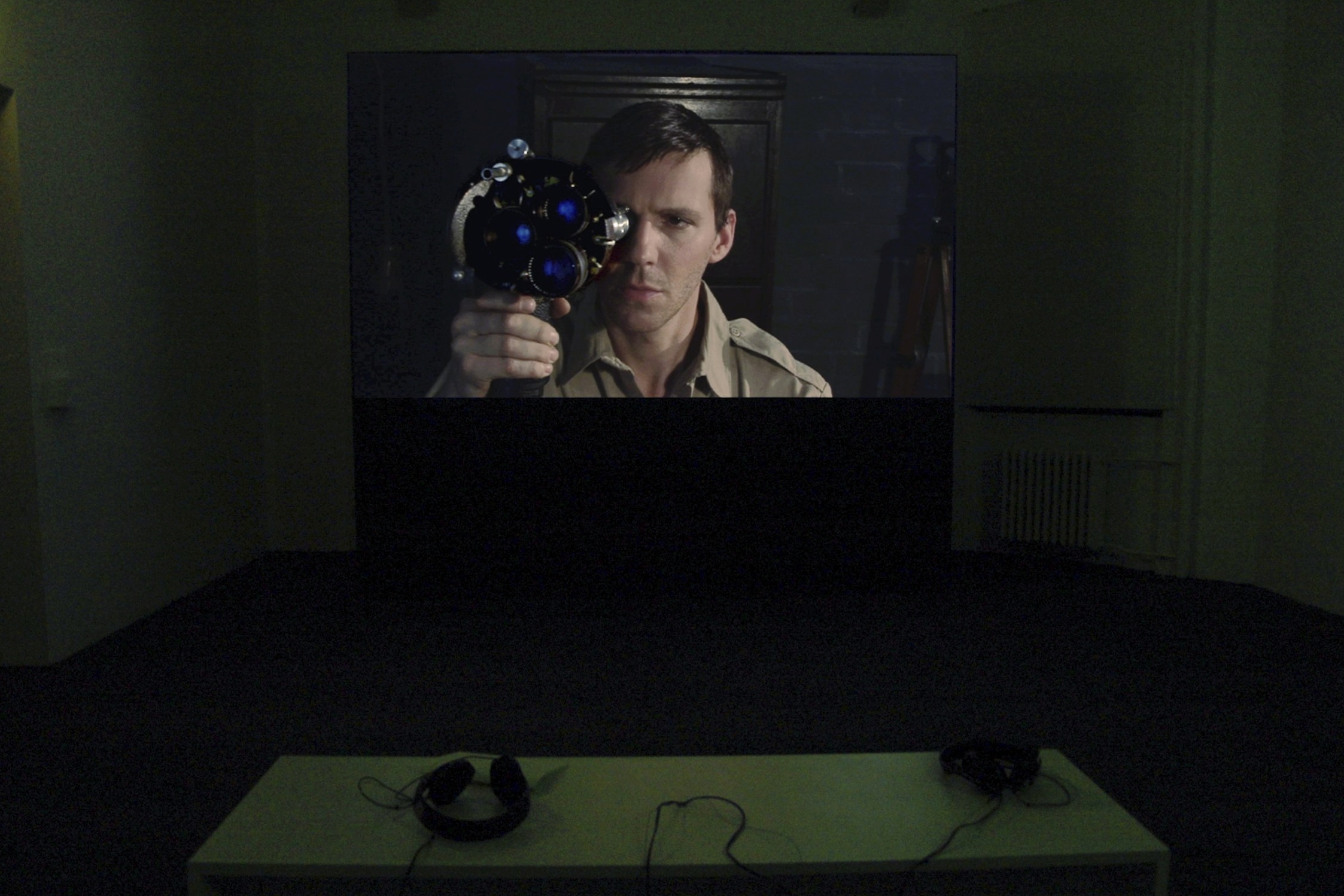Untitled (Plato's Cave) (2008), two channel video installation, Color//Sound, transferred on Blu-ray. Duration 14 min
Untitled (In Plato’s Cave), is a two-screen video installation, which revolves around an exploration of how media images are produced, and juxtaposes two almost identical episodes of a war reporter’s studio, one in the past (sometime in the early 1940s) and one in the present. The work consists of two chronologically distinct segments projected on separate screens opposite each other, in which the same actor plays the role of a war reporter then and now.
The first part of the film is shot in a reconstructed studio in Berlin, which was re-created after consulting photographs from the Geyer Berlin archives (Geyer originally functioned as a cinema post-production lab before being taken over by the German Propaganda Ministry during world war II for obvious reasons). For the purposes of the film, the re-constructed studio was equipped with original equipment from the 1940s, borrowed from the Film Museum in Berlin, including an Arriflex 35, the first professional hand held 35mm camera—originally designed as a hand-held newsreel camera and used by war reporters—an apparatus which changed the nature of war journalism. The second part of the video depicts the actor engaged in the same processes or writing, inspecting the camera, editing, and finally viewing a film that consists of short fragments of war reportage. The main difference being the contemporary office setting and the deployment of digital as opposed to analogue equipment, a development that has fundamentally changed the way reality is represented and understood.
Untitled (Plato’s Cave) is the second part of the Trilogy The Real The Story The Storyteller, in which Tsivopoulos focuses on the meaning of image production and its contribution on the manufacturing of history. In these works Tsivopoulos “questions the document as an objective trace left by events, as material evidence, or as the certification of reality. In this sense, he brings into question the authenticity of the document, and thus also its authoritativeness in providing evidence for the construction of history.”





